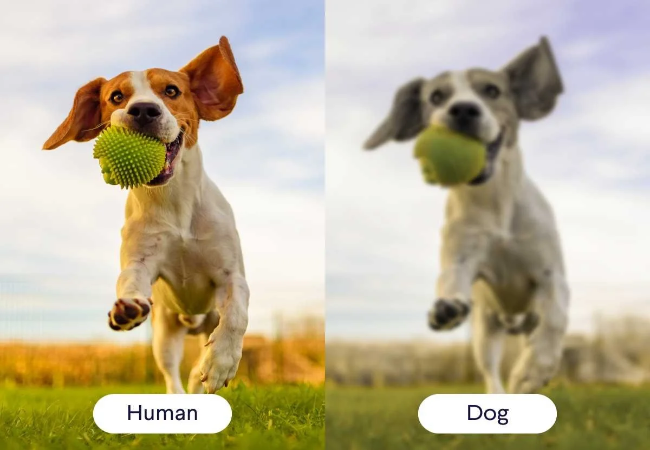Dog Vision 2025: Vet-Approved Insights on How Dogs See the World 🐕✨

In this article
Dog Vision 2025: Vet-Approved Insights on How Dogs See the World 🐕✨
By Dr. Duncan Houston BVSc
Dogs see the world differently from humans. Their vision has evolved to meet their needs as predators, companions, and explorers, rather than for fine detail or vibrant color perception. Understanding how dogs see can help you interpret their behavior and keep them safe.
👁️ Visual Acuity
Dogs are generally more nearsighted than humans. Their visual acuity is around 20/75, which means that what a human can see clearly at 75 feet, a dog can see clearly at 20 feet. While they may not detect fine details as well as humans, dogs are excellent at noticing movement, especially at a distance.
🌈 Color Perception
Dogs have two types of color receptors (cones), whereas humans have three. This means:
-
Dogs primarily perceive shades of blue and yellow.
-
Reds and greens may appear as shades of gray or brown.
Despite their limited color vision, dogs rely heavily on contrast, brightness, and motion to navigate their environment.
🌙 Night Vision
Dogs are well adapted to low-light conditions:
-
They have a higher proportion of rod cells, which detect light and movement rather than color.
-
A reflective layer behind the retina, called the tapetum lucidum, enhances night vision by reflecting light back through the retina.
These adaptations allow dogs to see and track movement in dim lighting far better than humans.
🔭 Field of View
Depending on the breed and eye placement, dogs have a wider field of view than humans—up to 240–270 degrees.
-
This panoramic vision helps them detect movement and potential threats in their peripheral vision.
-
It’s particularly useful for hunting and monitoring their surroundings.
🏃 Motion Detection
One of dogs’ strongest visual skills is motion detection:
-
Dogs can detect moving objects far better than stationary ones.
-
This ability helps them track prey, follow toys, or respond quickly to environmental changes.
🐾 Key Takeaways
-
Dogs rely more on motion, contrast, and brightness than on fine detail or color.
-
Vision varies by breed, age, and individual dog, so some may see better or worse than others.
-
Signs of vision issues include bumping into furniture, reluctance to navigate stairs, or ignoring visual cues. If you notice these, consult a veterinarian.
Understanding your dog’s visual strengths and limitations can help you enhance their environment, choose toys wisely, and ensure their safety, particularly in low-light conditions.



